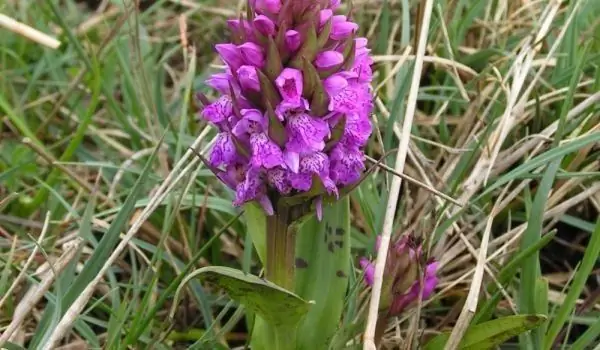2025 Author: Jasmine Walkman | [email protected]. Last modified: 2025-01-23 10:18
Salep / Orchis maculata / is a perennial herbaceous plant with green succulent stems and unbranched stem. It is also called cuckoo's tear, wedge grass, meadow and razor.
The name of the genus comes from the Greek word orchis, which means testis / the underground tubers of salepa resemble testicles /. Of the two tubers in the ground, one is a mother and the other is a daughter. The flowers of salep are collected in a helmet, they are colored differently.
They have 6 perianth petals, irregularly shaped and beautifully colored, gathered at the top of the stem in spike-like inflorescences. The stamen is one in number. It blooms in April-June. In almost all types of salep, the fruit is a box that cracks at 6 stitches, with numerous seeds. Salep grows in meadows, meadows and bushes up to 1500 meters above sea level. Salep is found throughout Bulgaria.
Types of salep
There are several types salep, among which the most common are bed bugs, common, helmet-shaped, purple, male and marsh. The leaves of these groups of plants are elliptical, narrowing in the vagina, green and succulent.
The most used are the tubers of the following species salep:
Ordinary salep / Orchis morio / - its tubers are whole and globular. The leaves are broadly lanceolate and the bracts are shorter than the ovary. Blooms April-May. It is distributed on meadows and meadows almost all over the country, most often in the plains and foothills.
Men's salep / Orchis mascula / - its tubers are whole, globular to ovoid. The leaves of the male salep are oblong-lanceolate with small red spots. Also blooms April-May. It is distributed in the bushes, on sunny slopes, near forests and forest meadows.

Spotted salep / Orchis masculata / - the tubers are deep, three or four parts. The leaves have dark spots. It blooms in May-August. It is distributed in forests and forest meadows, near wet meadows and mountain streams.
Helmet-shaped salep / Orchis militaris / - the tubers are whole, cylindrical to elliptical. The leaves are oblong-elliptical. All perianth petals are collected in a helmet. Blooms April-June. It is distributed in grassy places, meadows, bushes and forests, mostly in the foothills and mountains.
Composition of salep
The tubers of salep contain about 50% mucus, 11% sucrose, 30% starch, protein, sucrose, minerals and other substances.
Collection and storage of salep
Salep tubers are collected for medical purposes. Only the young daughter tubers are removed during flowering or in April-June after flowering. The removed tubers are carefully strung on a thread and immersed for about 2-3 minutes in boiling water and immediately in cold water to avoid germination.

The tubers are dried in the shade. Properly dried tubers are ovoid, round or glove-like. They have a brown or matte yellow color, odorless, but with a slimy taste. Salep powder can be purchased from some specialty stores.
Benefits of salep
Salep has anti-inflammatory and emollient action, which are due to the large amount of mucous substances. Salep is used for inflammation of the respiratory tract, gastrointestinal diseases, bronchitis, ulcers, pneumonia.
The infusion of salep relieves cough and inflammation of the respiratory tract extremely well. Respiration quickly normalizes, the irritated and inflamed bronchial mucosa calms down, secretion decreases.
The emollient effect of salep quickly spreads to the lining of the gastrointestinal tract. Salep contains mucilaginous substances, which are known as powerful antidotes because they absorb and evacuate ingested drugs and poisons.
1 tsp crushed tubers are boiled with 200 ml of boiling water and left to soak for about 15 minutes. From the resulting infusion drink 1 cup of coffee three times a day.
Salep can also be taken in the form of flour obtained from tubers. 1 tspflour is diluted in cold water and poured with 500 ml of boiling water. Leave to soak for 10 minutes, then take 1 cup of coffee three times a day.
Externally, the herb is used to apply boils, wounds, skin eczema, bruises and abrasions.

